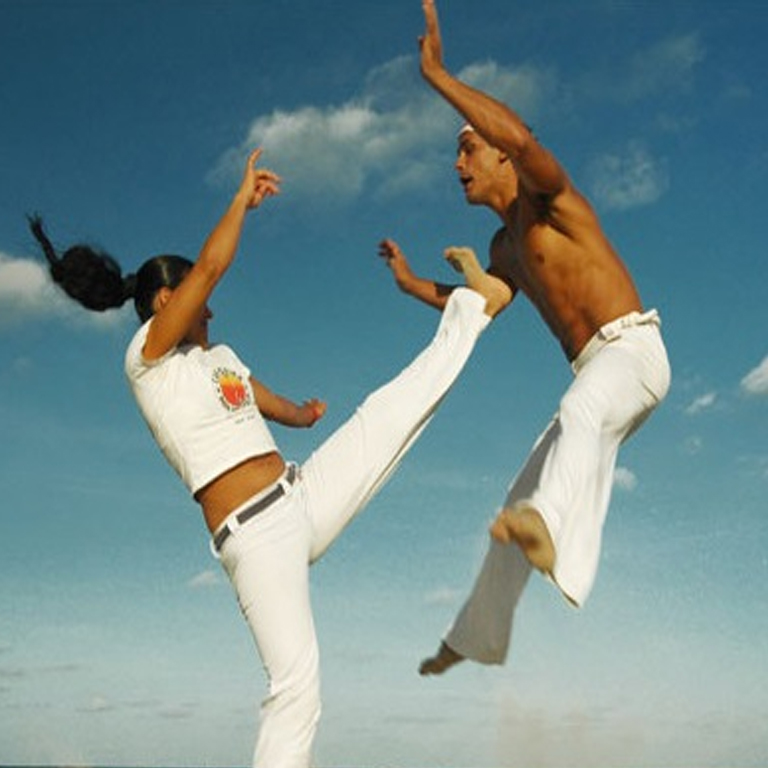The Regional game is characterized by being played to the rhythms of Capoeira Regional, "São Bento Grande Regional", "Idalina", "Banguela", "Amazonas", "Iúna," according to the principles developed by its creator, Manoel dos Reis Machado, Mestre Bimba (1900-1974). Bimba began to feel that the "Capoeira Angola", he had practiced and taught for a long time, had changed for the worse, and was a "dish of the day" for "pseudo-capoeiristas" that only used it for exhibitions in squares, with few attacks, leaving much to be desired in terms of the fighting aspect.
Bimba adopted elements of the "Batuque" dance and created what he called "Capoeira Regional", a Bahian martial art. (Batuque is a violent struggle, with the goal of throwing one's opponent to the ground using only one's legs. Bimba's father was a master in this sport). As an expert practitioner of "Capoeira Angola," and having extensive knowledge of the blows of "Batuque," it was easy for Bimba, with his creative genius, to create Capoeira Regional.
Having a quick rhythm isn't what makes a Regional game. There are rules; specific game for specific rhythms, and other foundational elements. In game of Capoeira Regional the players may be close together or far apart. The game can be high or low. It can be played in the Banguela rhythm, which the Master created to calm heated games. But it has to be rhythmic, synchronized with the beat of the single berimbau commanding the roda and setting the pace of the game. Capoeira Regional has strength, determination, rhythm, and a lot of technique and trickery as well.

